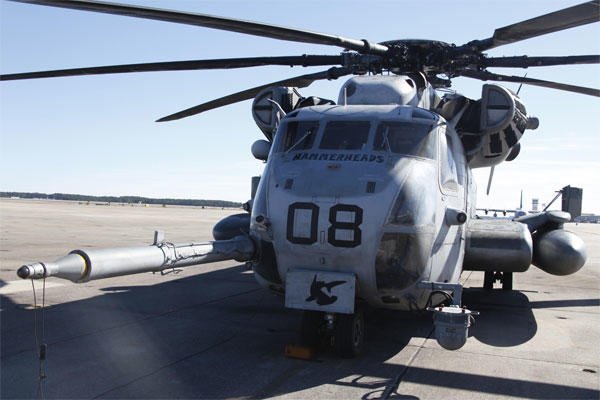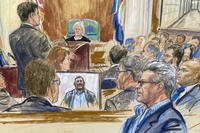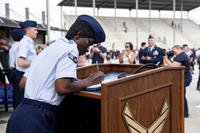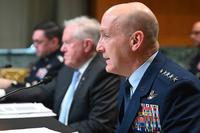MARINE CORPS AIR SATION CHERRY POINT, N.C. -- When Marines load into the back of a CH-53E Super Stallion for a night raid in the mountains of Afghanistan, they entrust their lives to the man at the stick. To ensure the Marines safely reach the fight, the pilot is highly trained in the night vision equipment he uses to navigate.
Marine Heavy Helicopter Squadron 366 trains its pilots and co-pilots to ensure they can meet all mission requirements, including troop transport, confined area landing, and transporting external cargo loads even in the absence of moonlight to guide them. To meet this challenge, the squadron trains select pilots to become night vision system instructors, who are then certified by trainers from Marine Aviation Weapons and Tactics Squadron 1.
“The most dangerous thing we do is flying at low-light level, which is basically starlight with no moon out,” said Capt. L. Orion Jones, a CH-53 instructor pilot for MAWTS-1. “The goggles don’t pick up a lot of details or a lot of contrast in the scene that you’re looking at. You’re looking through a straw tube; you have a 40-degree field of view, so you lose all of your peripheral vision.”
Instructor pilots also have to fly their own aircraft through the night while guiding students experiencing low-light flights for the first time in order to accomplish training objectives.
“The low-light environment itself is stressful even when you’re with people who know what they’re doing and you have confidence in the guy sitting next to you,” said Capt. Eric B. Philips, a pilot with HMH-366 who qualified as a night systems instructor Jan. 15. “And then to be an instructor and take someone out who’s brand new and has never been in a low-light environment, that in itself is stressful. You have to be confident in your ability to operate safely.”
That confidence is reinforced by extensive experience. Prospective instructors are required to log 100 hours flying with the night vision goggles, at least 50 of which have to be in a low-light environment. During the certification process, they are required to pass a 50-question written test, give a lesson to the MAWTS-1 instructor, and then go on a flight with the instructor demonstrating how to teach students about CH-53E capabilities at night.
After certification, pilots can train others to fly in low-light environments, which in turn increases the squadron’s night operations capability in real-world scenarios.
“The whole idea is to train with our weapon system, which is our aircraft, in a more tactical and effective manner,” said Philips. “Any time you can have somebody come out with some expertise and teach you to do that better, and any time I can instruct a young guy in how to use that system better and more effectively, that’s what it’s all about.”



























